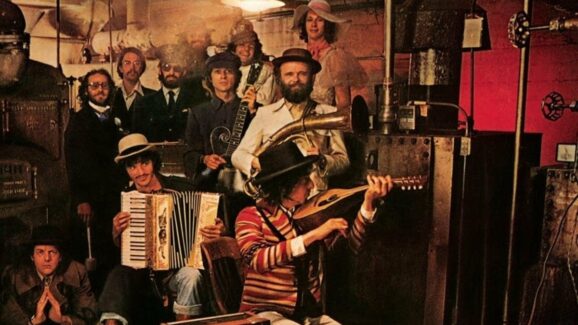[rating=3.50]
 Patti Smith was a poet first. Her best work, in general and on her new release, Banga, relies on her choice of words for its power. Unlike her contemporaries, musicians who subsequently developed a lyrical gift, Smith was a published poet when she began combining spoken word and music in New York City during the early 1970’s. With a following built at readings and in legendary Manhattan clubs, Max’s Kansas City and CBGB, she released a groundbreaking debut album, Horses, in 1975. A few years later Smith’s song, Because the Night, co-written with Bruce Springsteen, made her an international star. Recently Smith wrote about her early days in New York, including her relationship with artist/photographer Robert Mapplethorpe, in the National Book Award-winning autobiography, Just Kids.
Patti Smith was a poet first. Her best work, in general and on her new release, Banga, relies on her choice of words for its power. Unlike her contemporaries, musicians who subsequently developed a lyrical gift, Smith was a published poet when she began combining spoken word and music in New York City during the early 1970’s. With a following built at readings and in legendary Manhattan clubs, Max’s Kansas City and CBGB, she released a groundbreaking debut album, Horses, in 1975. A few years later Smith’s song, Because the Night, co-written with Bruce Springsteen, made her an international star. Recently Smith wrote about her early days in New York, including her relationship with artist/photographer Robert Mapplethorpe, in the National Book Award-winning autobiography, Just Kids.
Banga, Smith’s first release of new material in eight years, shows how she’s matured. Accompanied by her long-time touring band including the first musician to ever perform with her, guitarist Lenny Kaye—also responsible for the influential collection of 1960’s garage band music, Nuggets—the album’s arrangements are precise and effective, providing a fitting backdrop for Smith’s spoken and sung lyrics. In place of the now-or-never quality of her earlier work, Smith’s voice has grown richer and more expressive. The overall tone of the album is quieter and more reflective, worldly-wise.
Banga’s opening track, “Amerigo,” is a smooth rock groove interspersed with strings describing an imagined encounter between Amerigo Vespucci, Italian explorer and America’s namesake, his men, and a group of New World inhabitants. The Europeans expect to convert the natives. Instead they are liberated by their contact with a radically different culture. The song tells us less about history (European explorers assigned the name “Caribe” to some of the people they met there—hence Caribbean—not the other way around) than it does about the romantic longing for lost innocence, for adventure, and for a closer connection with nature. Smith repeats the line “tracin’ lazy circles in the sky” several times, a reference to the song Oklahoma and the frontier enthusiasm it embodies.
“April Fool” is a fairly straight-ahead romantic number featuring the guitar of Tom Verlaine, formerly of Television, whose band appeared frequently with Patti Smith at CBGB. A constant tension throughout Smith’s work, a powerful attraction to the divine competing with a fiery individualism, is reflected in the song’s lyrics: “We’ll break all the rules” along with “We’ll pray to all our saints. Icons of mystery.”
Many of the songs on Banga rely on external inspiration. “Fuji San,” featuring a Taiko drum intro, was written in response to Japan’s recent tsunami disaster. “This is the Girl” is a Fifties rock and roll stroll written in memory of departed British singer Amy Winehouse. “Banga,” the album’s title track is one of its most interesting. The hardest rocker by far, inspired by a dog drawn from Russian literature, Smith growls the title convincingly. “Nine” was written for Smith’s friend Johnny Depp on his birthday. Smith’s earlier work was more likely to explore her personal experience, but most of the songs on Banga are written about subjects. The difference, combined with her more controlled vocal style, gives the new album, at times, an uncharacteristically detached quality.
Smith’s most ambitious piece on Banga, “Constantine’s Dream,” clocks in at more than ten minutes. Over a shifting series of musical settings, the song revisits themes introduced in the album’s first track. In a dream-like visit to an Italian church, the singer is torn between a direct experience of nature, represented by St. Francis, and beauty’s representation in the form of art. Passing through a series of connecting dreams and scenes, the singer meditates on the conversion of the Roman emperor Constantine, the Italian painter Piero della Francesca, and Christopher Columbus. Once again, a European explorer is confronted with a new Eden and a choice. This time an apocalyptic future is prophesied. Impressively, Smith improvised the lyrics after months of research into the various subjects.
“After the Gold Rush,” Neil Young’s ode to extraterrestrial escape from ecological disaster, brings Banga to a close in a prayer-like version, featuring the voices of Smith’s children. Spiritually inclined, Smith offers no spiritual solution for the dilemma described in “Constantine’s Dream.” Instead, space travel substitutes for religious transcendence. Since the New World is no longer available, how about a New Planet?
Patti Smith shows she’s still capable of conjuring up powerful visual images with words on Banga. More inspired by ideas now than by personal experience, she artfully explores the connections between art, history, and religion across the centuries. If she’s grown more reflective in the process, it’s understandable. She’s earned it.












